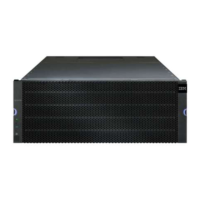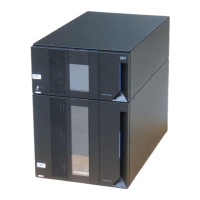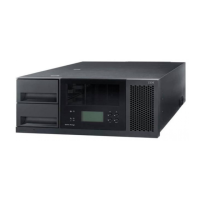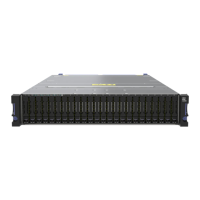Consistency Groups
A consistency group is a container that holds several logical drives so that you can manage all of the
logical drives as one entity. A consistency group allows simultaneous Enhanced FlashCopy images of
several logical drives, thus ensuring consistent FlashCopies of a group of logical drives.
If you frequently want to perform the same Enhanced FlashCopy image operations on several logical
drives at the same point in time, you can create a consistency group to perform those operations. A
consistency group pools several logical drives together so that you can take an Enhanced FlashCopy of
all the logical drives at the same point in time. Any operation that you perform on the consistency group
is performed simultaneously on all of the logical drives in the consistency group. The FlashCopy image
action creates synchronized Enhanced FlashCopy images of all the logical drives and is ideal for
applications that span several logical drives, for example, a database application that has the logs on one
logical drive and the database on another logical drive. Some of the Enhanced FlashCopy image
operations that you can perform on a consistency group include creating, scheduling, and rolling back.
Each logical drive that belongs to a consistency group is referred to as a member logical drive. When you
add a logical drive to a consistency group, the system automatically creates a new Enhanced FlashCopy
group that corresponds to this member logical drive for the Enhanced FlashCopy images that will be
created for this member logical drive. You can set up a schedule for a consistency group to automatically
create an Enhanced FlashCopy image of each member logical drive in the group at a specific time in the
future or on a regular basis.
and can only be restarted on an Enhanced FlashCopy image for the base logical drive
You can use either of the following two methods to create a consistency group:
v Create the consistency group, and add the member logical drives in one step.
v Create the consistency group, and then add the member logical drives in a subsequent step.
Standard logical drives and thin logical drives are the only type of logical drives that can be members of
a consistency group. Non standard logical drives, such as FlashCopy logical drives, cannot be used for
consistency groups. The base logical drive can reside on either an subsystem or a disk pool.
Enhanced Remote Mirroring and Enhanced FlashCopy Consistency Groups
v A logical drive can belong to several consistency groups. You can use consistency groups for Enhanced
FlashCopies and Synchronous Mirroring. Ensure to define separate and specific consistency groups for
Enhanced FlashCopies and Enhanced Remote Mirroring.
v When you add a base logical drive that contains a consistency group to an Enhanced Global Mirror
Group, the system automatically changes the Enhanced FlashCopy logical drive repository full policy
to automatically purge the oldest Enhanced FlashCopy image and sets the auto-delete limit to the
maximum allowable Enhanced FlashCopy limit for a consistency group.
v All member logical drives in a consistency group that also belong to an Enhanced Global Mirror
Group, must belong to the same Enhanced Global Mirror Group.
Characteristics of Consistency Groups
A consistency group has the following characteristics:
v You can initially create consistency groups with or without member logical drives.
v For DS3500 and DCS3700, a consistency group has a maximum 32 allowable number of logical drives.
v For DCS3700 storage subsystem with Performance Module Controllers, a consistency group has a
maximum 64 allowable number of logical drives.
v DS3500 and DCS3700 have a maximum 512 allowable number of Enhanced FlashCopy images.
6-6 IBM System Storage DS3000, DS4000, and DS5000: Command Line Interface and Script Commands Programming Guide

